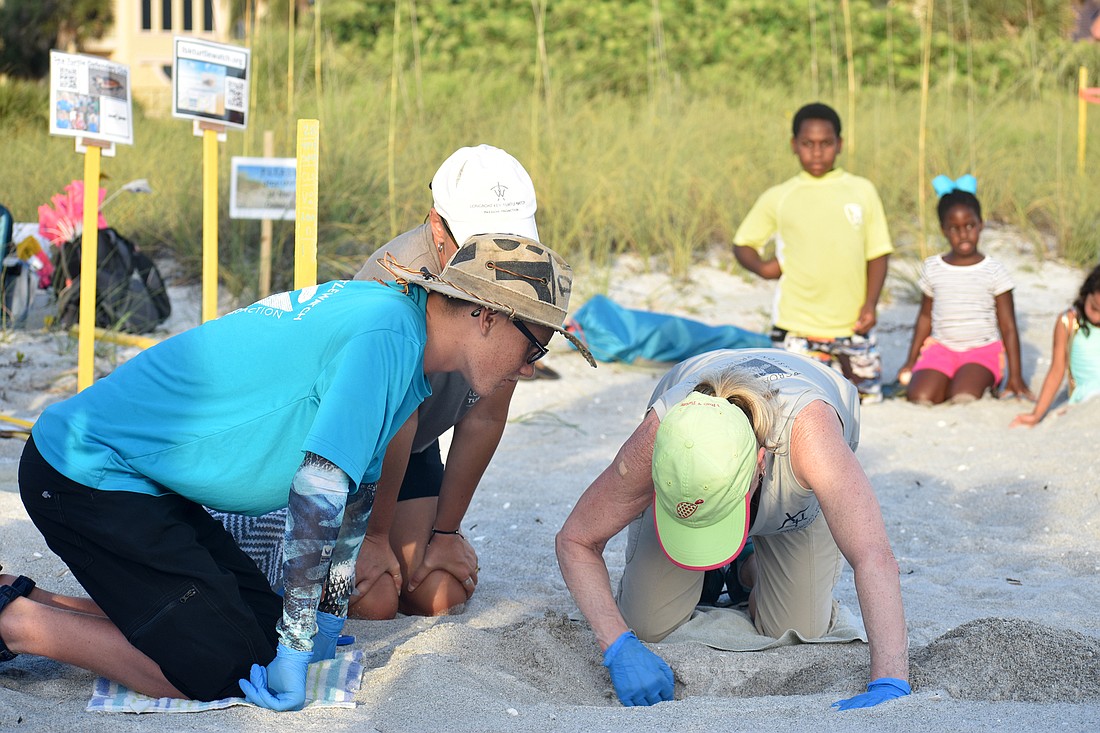- April 19, 2024
-
-
Loading

Loading

Three hatchlings made their way to the Gulf of Mexico July 10.
Under a permit from the Florida Fish and Wildlife Commission, the Longboat Key Turtle Watch hosted its first public nest excavation Tuesday night.
At 7:30 p.m., beachgoers and turtle enthusiasts gathered around a nest a little more than a quarter mile from the public beach access at 4795 Gulf of Mexico Drive.
Turtle Watch President Tim Thurman spoke to the crowd as three Turtle Watch volunteers began to excavate the nest.
First, Thurman explained, that the chances of seeing any hatchlings was really slim as this particular nest had hatched three days ago. The Turtle Watch knew the nest had hatched due to two small dips in the sand on top of the nest, which indicate the hatchlings had crawled out.
As the volunteers dug further into the sand, Thurman quizzed the crowd.
“Does anyone know how big a loggerhead turtle is?” he asked.
Although one attendee said “big,” that wasn’t the answer Thurman was looking for. The correct, and specific, answer is around 250 and 300 pounds. Loggerhead turtles can also lay up to seven nest a year.
After a few more questions, the volunteers interrupted to say they had found a hatchling. That was the first of three they found as they dug the 36 inches of the nest.
Thurman continued explaining what the Turtle Watch volunteers do as they patrol each morning on the Manatee County end of Longboat Key.
When Turtle Watch volunteers think they found a nest, they can verify it. They see the tracks from a mother turtle and gently look for a soft spot near where the tracks end, which could indicate where the eggs are. A volunteer will then dig until he or she sees the top of the first egg and then recover the nest and mark it with stakes. Then, they leave the nest be.
“We want Mother Nature to take its course,” Thurman said.
In total, the nest excavated Tuesday had 128 eggs in it. Of those, 122 made it to the ocean, one was found dead and five were unhatched. At the conclusion of the excavation, the Turtle Watch put the unhatched eggs back in the nest. The survival rate of hatchlings is one in 1,000.
The three that were excavated on Tuesday crawled into the Gulf 20 minutes after sunset with a cheering and encouraging crowd, of course, sans camera flashes.